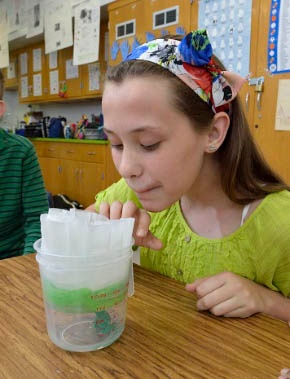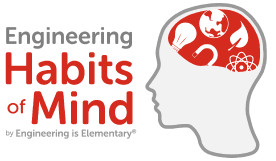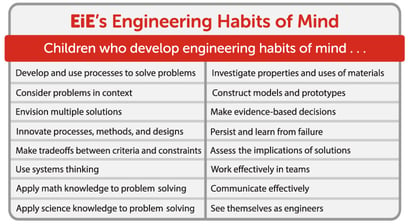The students in Jean Facchiano's fourth-grade class have spent the morning engineering their own models of permeable membranes, using ordinary kitchen supplies like sponges, coffee filters, and perforated aluminum foil. The goal is to design a system that lets water drip into a frog habitat, keeping the container slightly damp, not dry or flooded.
Each group of students has come up with their own unique system for controlling water flow into the habitat. Now, in the video below, the students present their results. It's not just a show-and-tell; it's a concise demonstration of elementary students starting to apply their systems-thinking skills.
Can Young Children Really Be Systems Thinkers?
 The term "systems thinking" refers to the ability to explore and understand the relationships between a system (such as an ecosystem, weather system, or heating system) and its component parts and see the network of relationships among system components. Systems thinking is a skill that will be critical for tomorrow's adults as they face 21st-century challenges like dealing with climate change, providing healthcare, or meeting society's energy needs.
The term "systems thinking" refers to the ability to explore and understand the relationships between a system (such as an ecosystem, weather system, or heating system) and its component parts and see the network of relationships among system components. Systems thinking is a skill that will be critical for tomorrow's adults as they face 21st-century challenges like dealing with climate change, providing healthcare, or meeting society's energy needs.
Once upon a time, educators thought that elementary-school-aged children simply weren't capable of the abstract thought required for systems thinking. But in recent years, evidence has supported the idea that elementary students CAN apply systems thinking—and that schools should be proactive in helping students do this, because of the positive impact systems thinking has on learning.
At EiE, we consider systems thinking to be an "engineering habit of mind"—a way of thinking, developed through engagement with engineering, that builds positive learning skills for a lifetime. The new Next Generation Science Standards take this same view; they create explicit expectations that young students will apply systems thinking.
Strategies for Promoting Systems Thinking
 Consider that NGSS cross-cutting concepts include "patterns," "cause and effect," "systems and systems models," and "flows, cycles and conservation in energy and matter." Standards like K-ESS3-1 ("Use a model to represent the relationship between the needs of different plants or animals [including humans] and the places they live") also presume that very young students will engage in systems thinking.
Consider that NGSS cross-cutting concepts include "patterns," "cause and effect," "systems and systems models," and "flows, cycles and conservation in energy and matter." Standards like K-ESS3-1 ("Use a model to represent the relationship between the needs of different plants or animals [including humans] and the places they live") also presume that very young students will engage in systems thinking.
To develop your students' systems-thinking skills, you must move the focus of lessons beyond remembering facts and challenge students to use their skills of evaluation and invention. Hands-on engineering is ideal for engaging students in these processes.
 In the "engineering membranes" exercise, for example, students build their initial models based on what they've learned in science class about membranes and about the basic needs of live animals, like frogs, who need both air and water to survive. After the design step, they test their models to see what happens when the component parts of the system interact.
In the "engineering membranes" exercise, for example, students build their initial models based on what they've learned in science class about membranes and about the basic needs of live animals, like frogs, who need both air and water to survive. After the design step, they test their models to see what happens when the component parts of the system interact.
In this testing process, they can observe how elements in the system (for example, water in the habitat) change over time. They work to connect cause and effect—to understand how each component of the design has an effect on how quickly the water moves through the membrane. Finally, they must explain their results, drawing on available evidence, and predict how modifications to the design will change the way the system functions.
The Teachable Moment
In the video above, the teacher monitors how her students are thinking about their results, ready to push them to think more deeply. You see two students talking about membranes that failed—one membrane let too much water pass through; the other didn't let enough water through. Both students attribute the failure to the same component in the system, and Ms. Facchiano prods them to see how these views are contradictory.
An "Improve" step is an important component of the engineering design process. The students in this class go on to redesign their membranes, based on what they understand about their systems. Watch the video above to see them reflect on that experience—and to see the excitement that engineering and systems thinking can generate.
Engineering is Elementary is a project of the National Center for Technological Literacy® at the Museum of Science, Boston.








